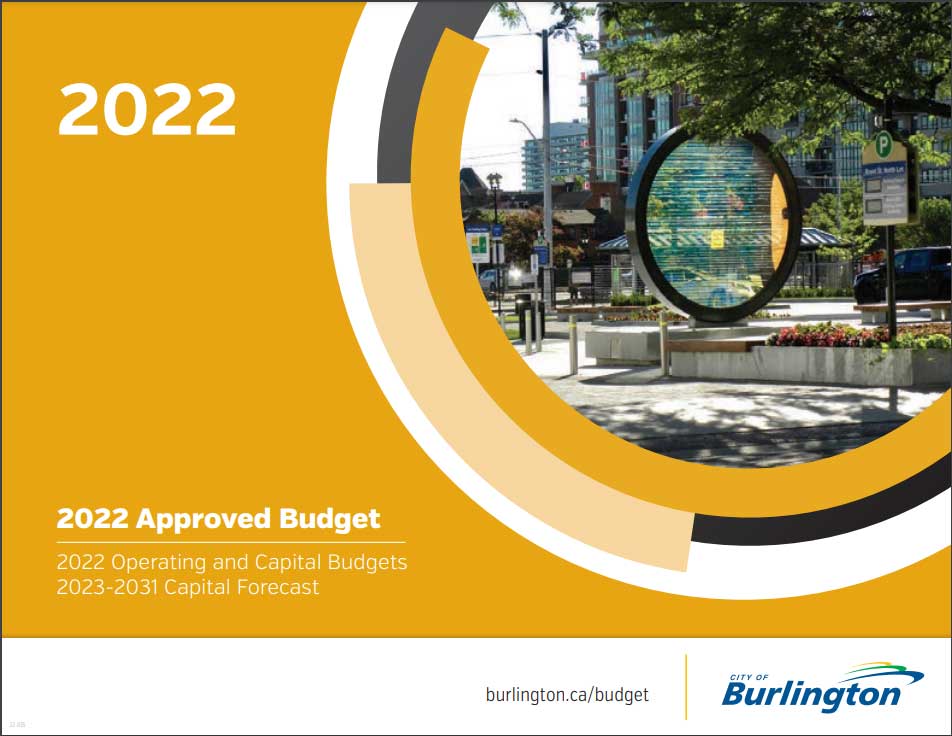The City of Burlington, located in Ontario, Canada, faces several significant infrastructure challenges that impact the daily lives of its residents. One of the most pressing issues is the need to modernize and expand the city’s transportation system, including roads, highways, and public transit, to reduce traffic congestion and improve safety. Burlington’s aging water and wastewater systems also require significant investment and upgrades to maintain reliable service and avoid potential health hazards. The city also needs to invest in affordable housing developments and improve access to high-speed internet to support economic growth and improve the quality of life for its residents. Addressing these challenges will require collaboration and investment from local and provincial officials and private sector stakeholders.
City of Burlington, Ontario
Population (Year): 194175 (2022)

Sample Highlights from the Capital Improvement Plan
Project ID
Project Title
Project Start Year
Project Description
Project Spend Total
Page Ref
Project Satus
309302
Sports Lighting – Relamping Program
2024
Light bulb replacement program for sports lighting systems to maintain desired light levels. There are 30 sports lighting systems in operation.
300000
72
Not Started
309314
Wellington Park
2025
Wellington Park is a neighbourhood park on the west side of Central High School. The park contains a playground, small soccer field and pedestrian bridge
220000
78
Not Started
309323
Duncaster Park
2028
2259 Duncaster Drive in the Brant Hills Community.
680000
82
Not Started
309363
Hager Creek Erosion Control (North of Winterberry Drive at Path)
2024
This project was identified in the 2020 Creek Inventory and Erosion Assessment Report as Priority 11. A Corrugated Steel Pipe (CSP) culvert is at risk where the paved pedestrian path crosses Hager Creek. The erosion control detailed designed is to be completed through the Minor Erosion Control Projects (SM-SD-685). Construction is to be completed through this project ID. This project will help reduce sediment loading into Burlington Bay / Hamilton Harbour.
500000
100
Not Started
309384
Shoreacres Creek Erosion Control (Harvester Road to New Street)
2026
A Class EA Study and detailed design will be required to address the erosion concerns. Initial cost estimates have been provided prior to Class EA Study. Updated preliminary construction cost estimates will be provided during the Class EA Study, and again refined at detailed design stage.
1980000
108
Not Started
Explore all options available to you!
Citylitics offers access to over 30,000 unique locations across North America through our Capital Projects Dashboard (CPD).
Capital Projects Dashboard (CPD) provides a comprehensive market view of all planned infrastructure spend in one single view with powerful filters such as: population, project value, fiscal year, project status, project description, geography, and more. The dashboard will help identify opportunity hot spots, create data-driven forecasts you can be confident in with bottom-up data for the next 5 years of planned infrastructure spend, and uncover true market needs.
How to Read a Capital Improvement Plan (CIP) for Business Development?
When a city, municipality or state issues a Capital Improvement Plan (CIP), it can be overwhelming and daunting, but there are a few key things you need to investigate. Let’s start with the definition of CIP – A Capital Improvement Plan (CIP) contains all the individual capital projects, equipment purchases, and major studies for a local government; in conjunction with construction and completion schedules, and in consort with financing plans. The plan provides a working blueprint for sustaining and improving the community’s infrastructures. It coordinates strategic planning, financial capacity, and physical development. A CIP stands at the epicenter of a government’s Planning, Public Works, and Finance departments. When a CIP is issued, it typically includes the following information:
- A listing of the capital projects or equipment to be purchased
- The projects ranked in order of preference
- The plan for financing the projects
- A timetable for the construction or completion of the project
- Justification for the project
- Explanation of expenses for the project
Now, for business development, while the capital plan is interesting, the capital program is for capital expenditures that extends five to ten years beyond the capital budget. Knowing the difference is important so you can influence upcoming program versus just responding to an RFP. If reading the CIP makes your head explode, or you want to save time, Request a Demo of Citylitics CIP dashboard with over 20,000 CIPs from USA and Canada. Citylitics has 20,000 plus available CIPs, how can we help you? What states, cities or counties are you looking to improvement your business development, we can assist you in influencing an upcoming RFP versus simply responding to an RFP. Citylitics Capital Projects Dataset is a comprehensive resource for businesses and organizations looking to track and analyze planned infrastructure spend in their area. The dataset offers a range of features and benefits, including:
- Comprehensive Market View: The dataset provides a single view of all planned infrastructure spend, with powerful filters such as population, project value, fiscal year, project status, project description, geography, and more. This allows businesses to gain a comprehensive understanding of the market and identify new opportunities.
- Identify Opportunity Hot Spots: The dataset offers map views and filters that allow users to identify opportunity hot spots where they need to allocate resources. This helps businesses to understand where they should focus their efforts to achieve the best results.
- Create Data-Driven Forecasts: The dataset provides bottom-up data for the next 5 years of planned infrastructure spend, allowing businesses to create data-driven forecasts they can be confident in.
- Uncover True Market Needs: The dataset allows businesses to develop long-term business plans, R&D, and growth initiatives based on true, bottom-up market needs instead of opinions and anecdotes. This helps businesses to make more informed decisions and achieve better results.
With Citylitics Capital Projects Dataset, businesses can gain a deeper understanding of planned infrastructure spend in their area, which can help them to identify new opportunities and make more informed decisions.
